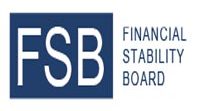The Financial Stability Board (FSB) released comment letters last week on the FSB and IOSCO consultative paper, “Assessment Methodologies for Identifying Non-Bank Non-Insurer Global Systemically Important Financial Institutions.” These institutions are referred to by the painful acronym of NBNI G-SIFIs. This document is part of the main conversation about whether asset managers should be SIFIs or not. While some of the comment letters were expected (see: BlackRock), others were more nuanced. Here’s what we observed.
BlackRock’s response can be summarized as “no, that’s wrong. We are not a SIFI.” BlackRock’s best recommendation for improving prudent risk management is probably impractical in the short-term though: they suggest that “a product- and activities-based approach to asset management oriented to improving systemic stability would greatly benefit the market ecosystem by reducing risk.” We agree, but it will be much easier for regulators to call big asset managers SIFIs and call it a day.
Brevan Howard objected to the FSB/IOSCO use of delta-adjusted Gross Notional Exposure (GNE) as an indicator of SIFI-ness. “GNE suffers from four key distortions – duration risk, options risk, offsets, and relative market risk – that are better addressed by other risk measures, which would provide regulators with a more accurate evaluation of potential systemic risk.” Brevan Howard notes that much better information is already available to regulators, for example in the US SEC’s Form PF.
LCH.Clearnet’s comment letter focused, appropriately enough, on CCPs and non-cleared derivatives margin calculations. FSB/IOSCO are proposing to use the notional amount of non-cleared derivatives as an indicator of complexity. However, this goes against previous Basel Committee commentary that led to the creation of the Standardized Approach to Counterparty Credit Risk Exposure (SA-CCR).
Occupy the SEC’s letter asked for more regulation, not less, and a focus on industry-wide risk oversight rather than a focus on just large asset managers. They take a historical look at previous financial crises and conclude that “Asset managers introduce an additional layer of principal/agent problems and potential moral hazard. Further, asset managers are more active than end investors in moving investments and so herding behavior by asset managers may well have propagated these crisis conditions from one asset class to others.” No surprises in the punchline, but its an interesting way to get to the point.
(On a related note, in the unintended consequences department, an op-ed in the New York Times, “Yes, Wall Street Needs Help,” from June 15, 2015, argues for aid to Wall Street to maintain employment levels for the good of New York City.)
Vanguard, who we often view as a voice of reason in other matters, completely slammed the FSB/IOSCO proposals as “significantly flawed.” According to Vanguard, “We are deeply disappointed by the approach adopted in the Consultation, which focuses on entity-based designations rather than addressing systemic risks through an activities-based approach. As we have posited in several forums, leverage coupled with interconnectedness, is the true indicator of systemic risk.” This first section of the Vanguard letter is highly impactful; later sections did not carry as powerful arguments in our reading.
It does not seem accurate to us to designate asset managers as SIFIs based on AUM alone. Derivatives activity matters, as does broad exposure to securities lending and repo. It would be very fair to designate individual funds as SIFIs and we can think of some managers that are so deeply entrenched in derivatives overall as to warrant the NBNI G-SIFI label. The current FSB/IOSCO document goes too far in the direction of risk and oversight and should be significantly revised.
A link to all the FSB/IOSCO NBNI G-SIFI comment letters is here.


